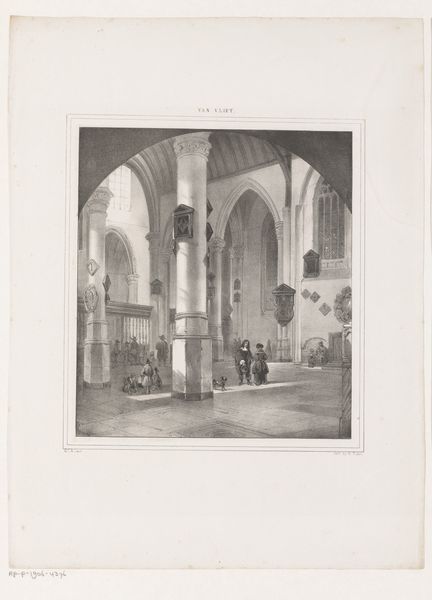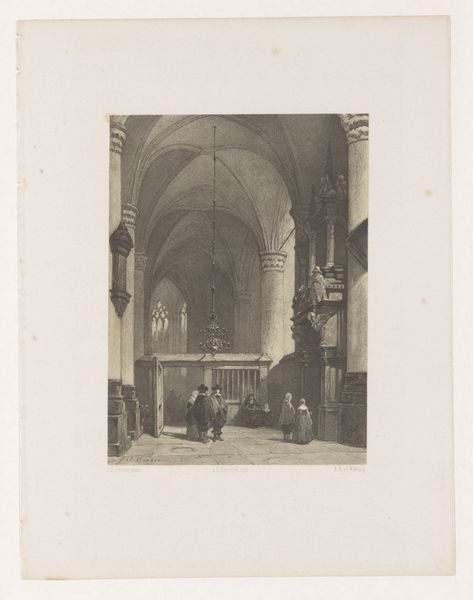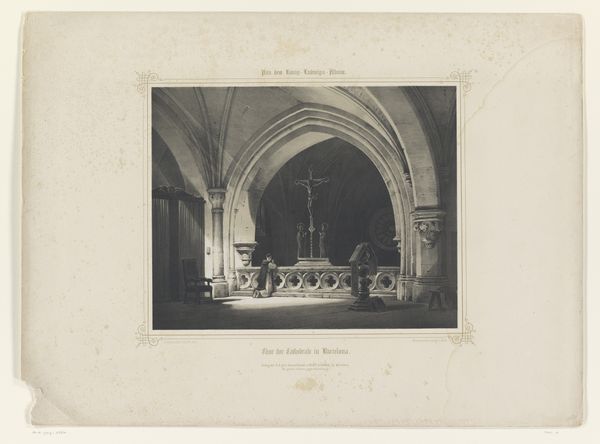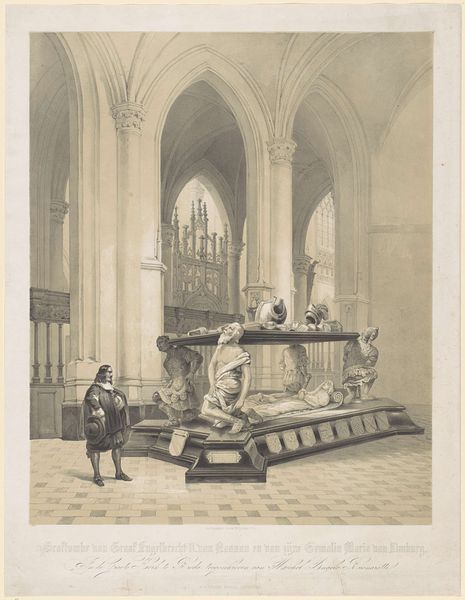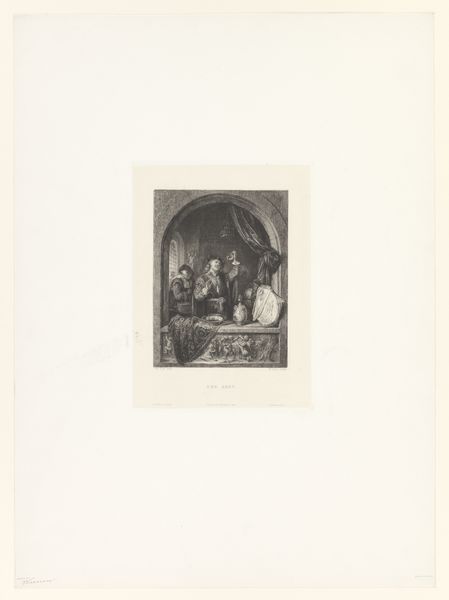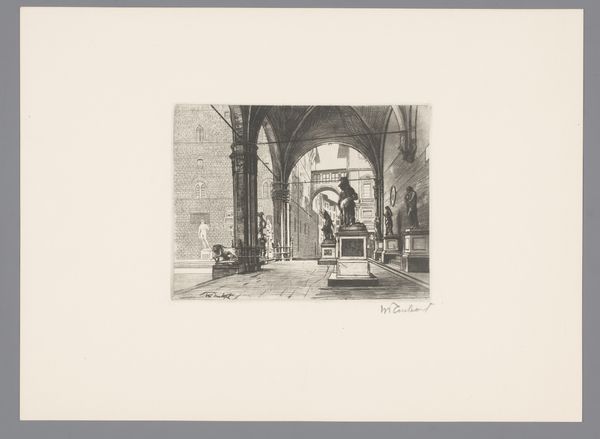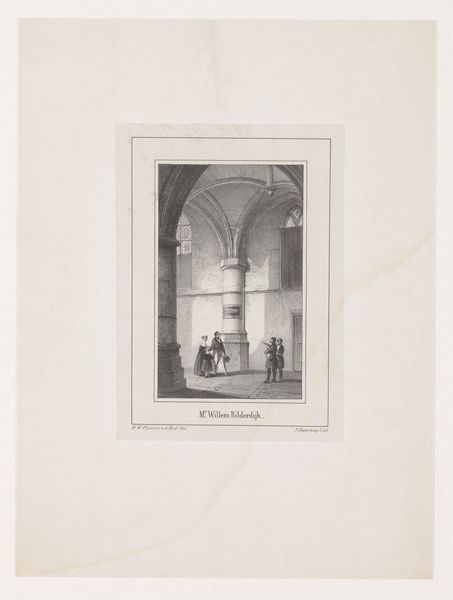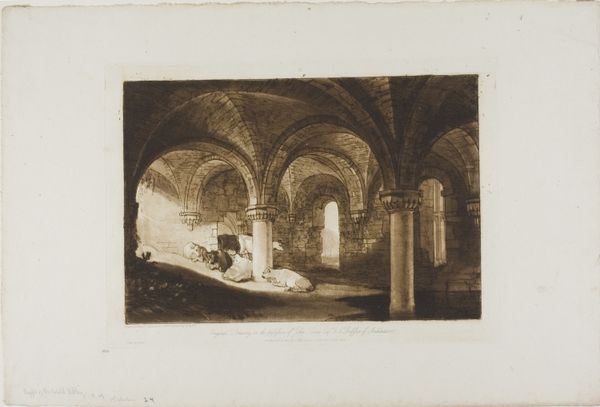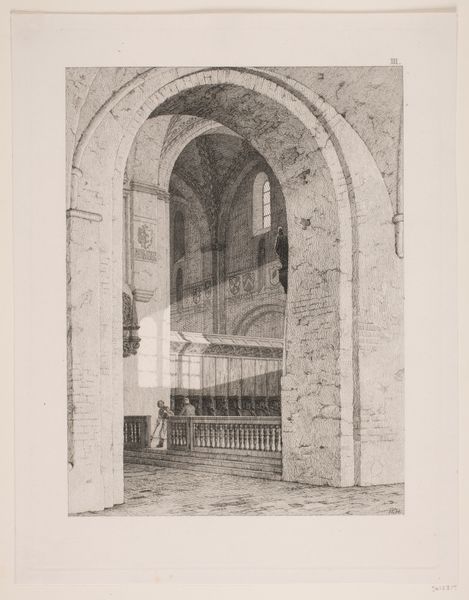
Grafmonument voor Engelbrecht II, graaf van Nassau-Dillenburg-Breda, 1504 1838 - 1887
0:00
0:00
drawing, print, paper, engraving
#
drawing
# print
#
landscape
#
figuration
#
paper
#
history-painting
#
engraving
#
realism
Dimensions: height 327 mm, width 255 mm
Copyright: Rijks Museum: Open Domain
Frederik Hendrik Weissenbruch made this etching of the tomb of Engelbrecht II in 1804. The architecture is rendered with light and shadow. The etching focuses on the tomb of a historical figure, Engelbrecht II, set against the backdrop of a grand church interior, likely in the Netherlands. Weissenbruch, living in the 19th century, was part of a cultural movement that sought to connect with and preserve aspects of the nation's past. The architecture suggests a society deeply rooted in religious tradition. The tomb itself reflects the social hierarchy of the time, with its elaborate design and prominent display serving as a symbol of power and status. To understand this image further, one would need to delve into the histories of Dutch art, religion, and social class. By examining such sources, we can gain a deeper understanding of its meaning within its specific cultural and institutional context.
Comments
No comments
Be the first to comment and join the conversation on the ultimate creative platform.

